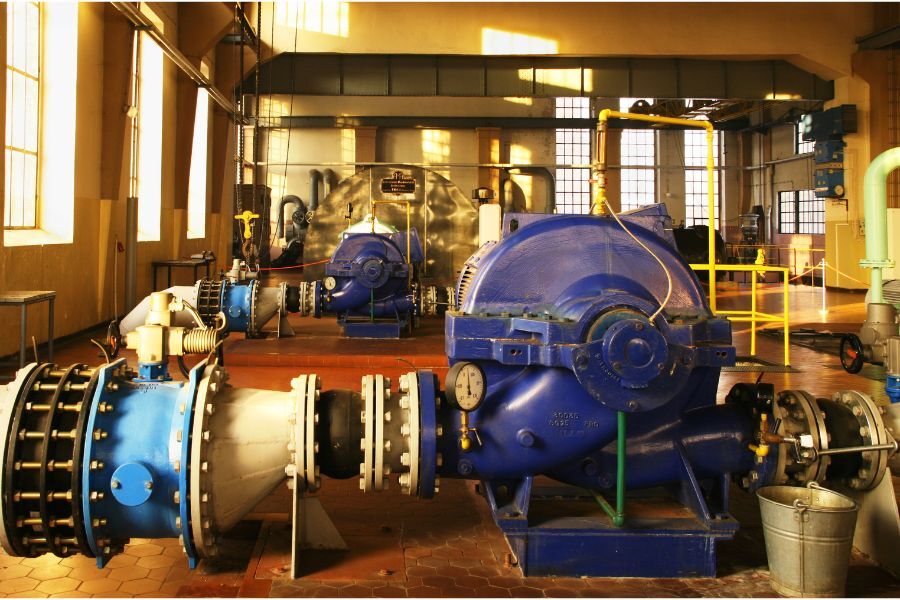
Common Errors When Installing or Operating a Horizontal Split Case Centrifugal Pump
The benefits of a horizontal split case centrifugal pump are clear, but what about the common mistakes people make when installing or operating them? Any error in the operation of an HSC pump can turn a benefit into a disadvantage, so this article outlines some of the key pitfalls to avoid:
1. Incorrect installation
The horizontal split case centrifugal pump is often incorrectly installed, which is why it can be seen rotating in the wrong direction! It’s not difficult to misalign the HSC pump, because the pump can still rotate in the correct direction, even if the impeller is installed incorrectly on the shaft (backwards). Misalignment results in excessive vibration and costly downtime and repairs. Make sure that you follow the manufacturer’s (OEM) instructions to prevent misalignment.
2. Ring clearance issues
Another pitfall that can arise when operating an HSC pump comes from ring clearances. Ring clearances relate to the space between the impeller and pump casing. There can be issues with ring clearances – either the amount of clearance as the HSC pump opens up from wear, or differences in clearances from one side of the pump to the other. Clearances involving the impeller to casing (A and B gaps) are also a concern. If ring clearances are too tight or too loose, the pump will operate at decreased efficiency, which means it takes more energy to drive the pump.
Where ring clearances are too tight, the impeller may start rubbing against the casing, causing increased friction and wear on both components. This can lead to reduced efficiency, increased vibration, and premature failure of the impeller or casing.
On the other hand, if the ring clearances are too loose, this can lead to fluid recirculation and reduced flow rate. This increases energy consumption and can cause vibration, which leads to seal and bearing failure.
Where ring clearances aren’t correct, the HSC pump is particularly vulnerable to shuttling, which is when the impeller moves axially due to differential pressures, and hydraulic preload. To avoid these issues, it’s important to make sure that the impeller ring and casing ring clearance is the same on both sides, within a tolerance of 0.003 inches. Ignoring increased clearances will decrease the critical speed of the rotor – and if this drops below operating speed range – can eventually destroy the pump.
To avoid ring clearance issues, it’s essential to install the HSC pump correctly. The impeller clearance should be within manufacturer specifications, and you must follow OEM guidelines when installing and aligning the pump.
Regular maintenance, such as monitoring vibration levels and performing impeller and casing inspections, can also help identify and prevent issues related to ring clearances. A general rule of thumb is to replace or renew ring clearances when they approach two times the original clearance set out in the OEM.
3. Horizontal elbow
Horizontal elbows on the suction side of the horizontal split case centrifugal pump can create unbalanced loading issues. Common solutions to this problem include installing flow straighteners or suction diffusers. However, many of these solutions are not effective and can even worsen the problem.
If you need to use horizontal elbows on the pump suction, it’s best to consult with a professional and experienced engineer or firm who can design flow modifiers that are tailored to your specific needs. This will ensure that you address unbalanced load issues on your HSC pump correctly, instead of using quick fixes that might just make your problem worse.
Do check out our range of horizontal split-case centrifugal pumps. If you’re still unsure, contact us on 1-800-367-4180 (toll-free). Our experts are on hand to help you choose, install, maintain, and monitor a variety of equipment. And to answer questions about things you’ve previously tried gone wrong.
